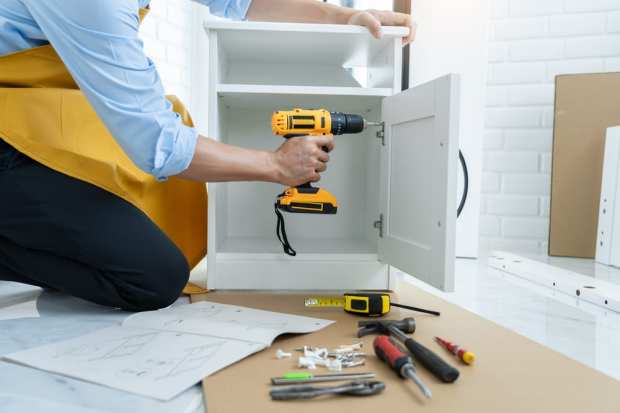Installation Network Aims To Remove Assembly Headaches For eCommerce Buyers

The pandemic-driven digital shift means that eCommerce buyers will need some help assembling their purchases. A company called Buy It Installed, which launched in 2012, is ready to help the less skilled consumer with the task. The company allows online and offline consumers to purchase products with installation included, and then uses connecting technology to facilitate the assembly with an installation service provider.
With more than 30 years of experience in the home installation industry, Todd Banhidy, CEO of Buy It Installed Inc., has catered to the eCommerce boom similarly to how TaskRabbit helps consumers assemble furniture and other home goods. Now, Banhidy and his team have generated demand from top auto manufacturers and retailers, leading to a $4.5 million extension to its Series A round.
The Irvine, California-based company’s move into its “do it for me” (DIFM) installation solutions for the automotive aftermarket industry led to its highest monthly performance in April.
“It is common business wisdom that investment and business opportunities dry up during an economic downturn, but the recent surge in eCommerce sales during this recent lockdown has shown that companies such as Buy It Installed, which enable eCommerce merchants to provide a better customer experience and drive more sales, can not only survive, but also thrive,” said VP of Business Development Tom Burton.
The new round will accelerate the growth of the company’s installation network as well as additional corporate staff.
At its core, Buy It Installed is a connector between the eCommerce merchant, the service provider and the consumer. In addition to the automotive aftermarket, the company also works with manufacturers and retailers in consumer electronics, smart home devices, computer hardware, plumbing, lighting and more.
Here’s how it works: Suppose a consumer in San Diego is in the market for a bike rack to store several bikes in a garage. She searches on Google and finds a company called Garage Gator, which makes elevated and motorized racks for up to eight bikes. She chooses a rack, goes to the product page and sees not only the product and the price, but also the “Buy It Installed” button. The product page displays the price for the product uninstalled and then the price with installation included. When the Buy It Installed button is clicked, the consumer is automatically connected to a local contractor who has been trained and certified to install the product.
If the consumer purchases a Buy It-sanctioned product in a store, the product will have a scannable UPC code that connects the buyer to the installer network. That network is another value proposition for the company. Buy It Installed also owns and operates the Craftsman Republic network, which consists of brand-certified installation professionals across the nation.
During the pandemic, the company has become a source of steady jobs and predictable income for installation specialists.
“When they register, it asks questions about what they want to install, the vendors they’re skilled in installing, whether they have specific certification, that sort of stuff,” noted Burton. “The vendor must be certified by the product they’re installing. We have an online training center where they go in, watch videos and take tests. After they’ve been trained and background checked, they are authorized to receive work orders.”
Burton pointed out that so far, most of the company’s marketing has been through word of mouth. The automotive sector turned out to be a very fast-growing vertical. Burton is currently adopting an account-based management strategy to attract auto manufacturers, auto parts and accessories manufacturers, and the people who connect them. Several large companies are coming on board during the next 30 days, and the company is focused on expanding its nationwide network of mechanics.
Burton named three major focuses as the new financing comes in. The first is educating clients on how to properly merchandise the company services: There’s more to it than just pushing a button on the site, he said. Retargeting strategies have helped in that effort. The second issue is finding candidates to build the Craftsman network. The third is honing the automated process that connects the supplier company and the installer.
While home improvement is still a good business, automotive is where the company is most focused.
“The whole auto aftermarket has exploded in the last two months – people are spending money on their Jeeps, cars and trucks because they might not be taking their normal vacations this year,” Burton said. “We’re also seeing people in markets that are not traditional do-it-yourself markets, such as suburban women. Those are the people who will be the most valuable to our business. And the beauty of the auto business is that it’s all done in their driveway, so no one has come into their house.”
